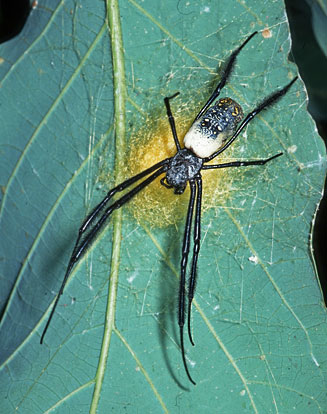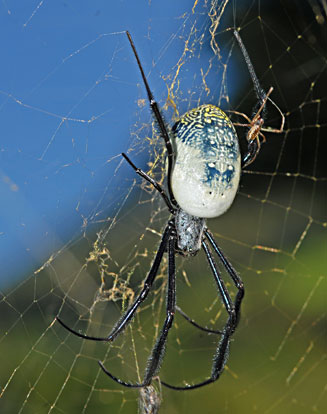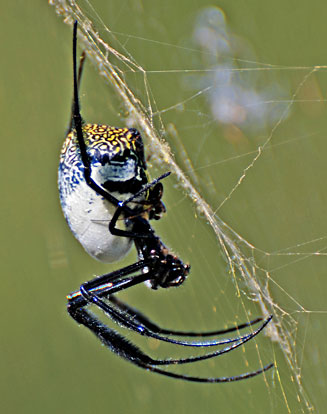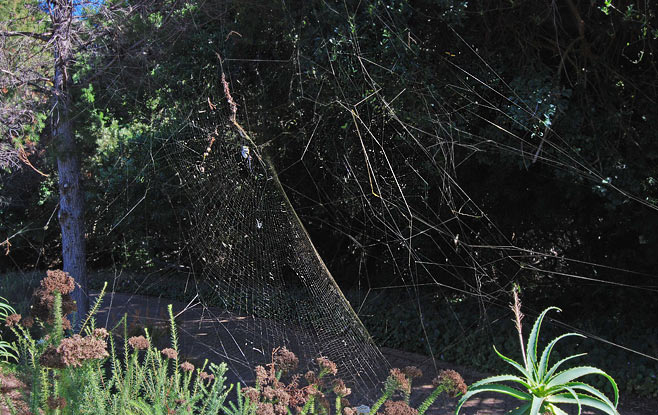|
Nephila fenestrata (Black-legged nephila) Life
> Eukaryotes
>
Opisthokonta >
Metazoa
(animals) > Bilateria > Ecdysozoa > Panarthropoda > Tritocerebra >
Arthropoda > Arachnomorpha > Cheliceriformes > Chelicerata > Euchelicerata
> Arachnida > Araneae
> Araneomorpha > Family: Nephilidae > Genus:
Nephila
 |
 |
|
Nephila fenestra female on web at
Kirstenbosch, Cape Peninsula. The legs of a male on her underside can be
seen. [photo Norman Larsen ©] |
Nephila fenestra female on egg sac. [photo
Norman Larsen ©] |
 |
 |
|
Nephila fenestra female with much smaller
male (top right) on web at Kirstenbosch, Cape Peninsula. [photo Norman
Larsen ©] |
Nephila fenestra female in side view on web
at Kirstenbosch, Cape Peninsula. [photo Norman Larsen ©] |
Description
The female, with a body length of 20-30mm, is almost
entirely black and the first, second and fourth pairs of legs have a brush of
bristles on the tibia. The third pair of legs is the shortest with no brush. The
abdomen is elongated (long oval) and is cream to yellow with the caudal section
(towards the tail end) black or blue with speckles infusing forward into the
yellow. There is a huge variation of abdominal patterns with the amount of black
or blue on the abdomen. The key feature to identify this species is the black
legs and window pattern ventrally.
Distribution and habitat
Nephila fenestrata, the Black-legged nephila, occurs
over most of South Africa, excluding the arid central and western regions, and
is the only species of Nephila to occur in the Western Cape. Since 2002
this species has crossed over the Hottentots Holland mountain range and is now
the most commonly seen orb-web spider on the Cape Peninsula. It can be seen from
January till the end of June or even to the end of August, usually in forested
areas or near areas with trees allowing for suspension of their large orb-webs.
In Kirstenbosch and Newlands Forest one can easily see 30 or more of these
spiders on a walk.
Derivation of names
The specific name fenestrata (Latin: windowed)
refers to the window-like pattern on the ventral side of the abdomen.
Prey capture
See under Nephila.
|
 |
|
Side-on view of Nephila fenestrata web
showing the knock-down strands of silk in front and behind the main web.
Also note how the top section of the web is missing, a characteristic of
webs made by adult Nephila. [photo Norman Larsen ©] |
Mating and reproduction
See under Nephila.
Ecological interactions
See under Nephila.
Text by Norman Larsen ©
|
